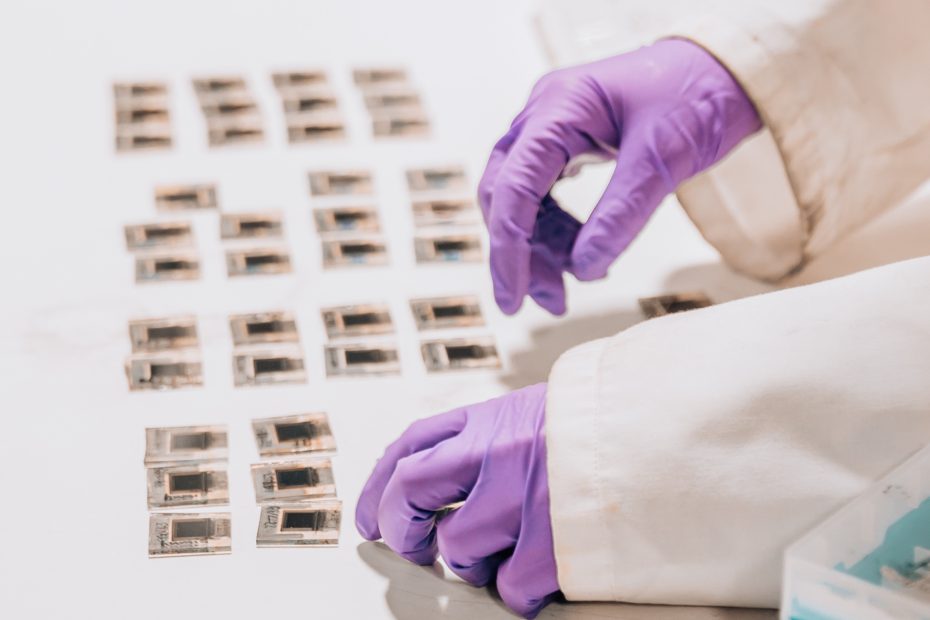Photovoltaics, including perovskite solar cells, are one of the fastest growing energy technologies. A recent paper from Dr Rhys Charles, Alexander Doolin, Prof Matthew Davies et al., stresses that, to ensure sustainability, we need to design perovskite solar cells for a circular economy from the get-go.
Perovskite solar cells are an emerging technology on the cusp of commercialisation. They show potential for high performance using low-cost materials, giving them an advantage over the standard, more costly silicon PV. However, due to the scale of deployment needed to mitigate climate change, we must adopt a circular economy model for perovskite technologies to prevent large amounts of waste being produced and ensure security of raw materials.
In a recent paper in the Royal Society of Chemistry’s ‘Energy and Environmental Science’ journal, researchers review the economic, legislative, and environmental drivers for adopting a circular economy approach for perovskites. They also examine the research into remanufacturing and recycling strategies to enable the reuse of key materials.
Existing technologies, such as silicon PV, have been designed for a single lifetime with no consideration of end-of-life outcomes. Deploying them at scale will produce vast amounts of waste from which materials cannot be recovered effectively.
As they are still in a pre-commercialisation stage, there is a significant opportunity to design perovskite solar cells with their full life-cycle in mind now. Circular economy thinking can minimise environmental impacts of production, mitigate potential problems with the supply of critical raw materials, and reduce waste.
Additionally, the potential benefits in terms of competitiveness with established renewables are considerable. Researchers have been able to demonstrate processes to retain high-value critical raw materials via cell refurbishment, remanufacture and module recycling. These processes could reduce production costs and environmental impacts to below levels of any other PV technology to date.
It is vital that we implement circular economy principles throughout the lifecycles of perovskite PV, and that we do so now at this early stage of development to ensure that it is sustainable for the future.
Dr Rhys Charles, lead researcher on the paper, said:
“It is essential that all renewable energy technologies adopt circularity and substitute or retain CRMs (Critical Raw Materials) in successive generations of products. The opportunity to do this in an effective way by optimising materials selection and design of perovskite PV in tandem with remanufacturing processes for retention of components in circular lifecycles to deliver the world’s first truly sustainable renewable energy technology is exciting. We are very grateful for the opportunity to publish this perspective which gives direction and context to the wider field, helping to ensure perovskite PV will be inherently sustainable, compatible with future regulatory approaches which drive circularity and mitigate waste challenges, and increasingly economically competitive with alternative sources of energy.”
